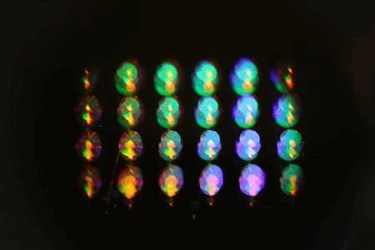Stackable Metamaterials Using Computer Chip Technology Make For Novel Retroreflector
By Jof Enriquez,
Follow me on Twitter @jofenriq

Engineers at the California Institute of Technology (Caltech) have designed and fabricated a unique type of retroreflector built from stackable metamaterials using computer-chip manufacturing technologies, allowing them to be integrated into optoelectronic devices.
Used in safety vests, road signs, and running shoes, standard retroreflectors consist of small mirrors or tiny glass spheres attached to the surface of reflective paint. However, the new type of retroflector created by the Caltech team consists of a twin layer of metasurfaces, covered by a metamaterial filled with millions of nanometer-sized silicon pillars, according to a Caltech news release.
The silicon pillars embedded on the transparent first layer focus light as it passes through onto a single spot on the second, reflective layer, which bounces the light back to the first layer, which then bounces the light directly back to its source.
By manipulating the configuration of silicon pillars, a single metasurface already can be tweaked for different purposes, such as focusing light in a flat lens, or refracting light, as in a prism. However, a design framework made up of two stacked metasurfaces exhibits retroreflective properties not yet demonstrated with single metasurfaces.
"Retroreflection can be achieved with two vertically stacked planar metasurfaces, the first performing a spatial Fourier transform and its inverse, and the second imparting a spatially varying momentum to the Fourier transform of the incident light," states the research, published in the June 19, 2017 edition of Nature Photonics.
"By placing multiple metasurfaces on top of each other, it is possible to control the flow of light in such a way that was not possible before," Faraon says. "The functionality of a retroreflector cannot be achieved by using a single metasurface."
The metamaterials used for Caltech’s planar monolithic near-infrared retroreflector were fabricated using existing computer-chip manufacturing technologies, and therefore could be integrated into chips used in optoelectronic devices.
Besides finding value in high-performance components, low-power and low-weight passive optical transmitters, "this could have applications in communicating with remote sensors, drones, satellites, etc.," adds Faraon.
The Caltech study was sponsored by the Jet Propulsion Laboratory, DARPA, Northrop Grumman, the Japan Student Services Organization, and the U.S. Department of Energy.
